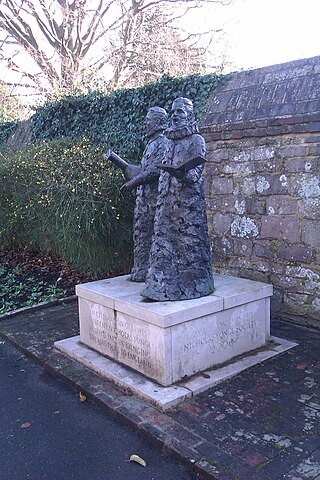Scarlatti is an Italian surname. Notable people with this surname include:
Philidor (Filidor) or Danican Philidor was a family of musicians that served as court musicians to the French kings. The original name of the family was Danican (D'Anican) and was of Scottish origin (Duncan). Philidor was a later addition to the family name, given first to Michel the elder by Louis XIII because his oboe playing reminded the king of an Italian virtuoso oboist named Filidori. Both Michel the younger and Jean played in the Grande Écurie in Paris. Later members of the family were known as composers as well. One of them was a chess master.
John Jenkins (1592–1678), was an English composer who was born in Maidstone, Kent and who died at Kimberley, Norfolk.

Nicholas Yonge was an English singer and publisher. He is most famous for publishing the Musica transalpina (1588), the earliest collection of Italian madrigals with their words translated into English. The first of the Elizabethan madrigal anthologies, it was enormously popular, and began a vogue for the composition and performance of madrigals in England which lasted into the first two decades of the 17th century. William Heather, founder of the music chair at Oxford University, included the book in his portrait, painted c. 1627, confirming the longevity of Musica transalpina's influence and popularity.
The English Madrigal School was the intense flowering of the musical madrigal in England, mostly from 1588 to 1627, along with the composers who produced them. The English madrigals were a cappella, predominantly light in style, and generally began as either copies or direct translations of Italian models. Most were for three to six voices.
Alfonso Ferrabosco was an Italian composer. While mostly famous as the solitary Italian madrigalist working in England, and the one mainly responsible for the growth of the madrigal there, he also composed much sacred music. He also may have been a spy for Elizabeth I while he was in Italy.
Alfonso Ferrabosco may refer to:
Alfonso Ferrabosco the younger was an English composer and viol player of Italian descent. He straddles the line between the Renaissance and Baroque eras.
Nicholas Lanier the Elder was a French musician who played the flute and the cornett.
The decade of the 1540s in music involved some significant events.
Domenico Maria Ferrabosco was an Italian composer and singer of the Renaissance, and the eldest musician in a large prominent family from Bologna. He spent his career both in Bologna and Rome. His surviving music is all vocal, consisting of madrigals and motets, although he is principally known for his madrigals, which musicologist Alfred Einstein compared favorably to those of his renowned contemporary Cipriano de Rore.
Alfonso Ferrabosco (junior) was an English composer and court musician.
Domenico is an Italian given name for males and may refer to:
Henry Ferrabosco was a court musician before and during the First English Civil War and died a captain in the parliamentary army in Jamaica during the Caribbean expedition.
Bassano is an Italian surname. Notable people with the surname include:

Drexel 4302, also known as the Sambrook Book, based on an inscription from a former owner, Francis Sambrook, is a music manuscript containing vocal and keyboard music from Italian and British composers, documenting the transition from Renaissance to Baroque music. Though literature on the manuscript has assumed the copyist was Francis Tregian the Younger, recent analysis has demolished that hypothesis.
Richard Charteris is a New Zealand born Australian musicologist.
This page is based on this
Wikipedia article Text is available under the
CC BY-SA 4.0 license; additional terms may apply.
Images, videos and audio are available under their respective licenses.

